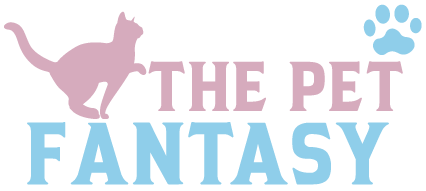Cat Feeding Behavior Tracker
About the Cat Feeding Behavior Tracker
The Cat Feeding Behavior Tracker is a specialized tool designed to help cat owners monitor and optimize their pet’s eating habits. Understanding Cat behavior around food is key to ensuring proper nutrition and health. This tool, provided by The Pet Fantasy, evaluates meal frequency, appetite, food preferences, and behavioral changes to provide tailored recommendations for improving your cat’s feeding routine.
Importance of the Cat Feeding Behavior Tracker
Feeding behavior is a critical indicator of a cat’s health and well-being. Changes in appetite, food preferences, or related behaviors can signal underlying issues like stress, dental problems, or dietary imbalances. The Cat Feeding Behavior Tracker helps you identify these patterns, ensuring your cat receives the right nutrition. By monitoring Cat behavior, this tool supports weight management, prevents overfeeding, and enhances your cat’s quality of life, making it an essential resource for responsible pet ownership.
User Guidelines
Using the Cat Feeding Behavior Tracker is straightforward and user-friendly:
- Daily Meal Frequency: Enter how many times your cat eats per day, including meals and treats.
- Appetite Level: Select normal, increased, or decreased based on your cat’s eating enthusiasm.
- Food Preference: Choose consistent, picky, or variable to describe your cat’s response to food types.
- Behavioral Changes: Indicate any changes like vomiting, lethargy, or aggression related to feeding (none, mild, moderate, severe).
- Click Evaluate Feeding Behavior: The tool will generate a behavior score and recommendations.
The results are estimates based on typical feline feeding patterns. Consult a veterinarian if significant behavioral or health changes are observed.
When and Why You Should Use the Cat Feeding Behavior Tracker
The Cat Feeding Behavior Tracker is beneficial in various scenarios:
- New Cat Owners: Establish a baseline for your cat’s feeding habits to monitor changes over time.
- Behavioral Changes: If your cat shows altered appetite or food rejection, use the tool to assess potential issues.
- Diet Transitions: Track behavior after switching foods to ensure compatibility and acceptance.
- Preventive Care: Regular use helps detect early signs of health or behavioral problems, ensuring timely intervention.
The primary reason to use this tool is to optimize your cat’s nutrition and health. Feeding behavior reflects Cat behavior and can indicate stress, illness, or dietary needs. The Cat Feeding Behavior Tracker provides insights to maintain a balanced feeding routine.
Purpose of the Cat Feeding Behavior Tracker
The Cat Feeding Behavior Tracker serves multiple purposes:
- Behavior Monitoring: Track feeding patterns to identify changes or issues early.
- Nutrition Optimization: Ensure your cat’s diet aligns with their preferences and health needs.
- Health Improvement: Address behavioral or physical symptoms related to feeding for better well-being.
- Owner Empowerment: Provide actionable recommendations to enhance your cat’s feeding experience.
Offered by The Pet Fantasy, this tool supports cat owners in delivering exceptional care.
Understanding Feline Feeding Behavior
Feeding behavior is a key aspect of Cat behavior, influenced by health, environment, and preferences. The Cat Feeding Behavior Tracker evaluates:
- Meal Frequency: Cats typically eat 2–3 meals daily, but frequent snacking or skipping meals may indicate issues.
- Appetite Level: Increased or decreased appetite can signal stress, illness, or dietary imbalances.
- Food Preference: Picky or variable preferences may reflect taste, texture, or health-related issues.
- Behavioral Changes: Symptoms like vomiting or lethargy may indicate food sensitivities or medical conditions.
By analyzing these factors, the tool offers a comprehensive approach to understanding and improving your cat’s feeding behavior.
Health Implications of Feeding Behavior Issues
Abnormal feeding behavior can have significant health implications. Decreased appetite may lead to weight loss or malnutrition, while increased appetite can contribute to obesity, diabetes, or thyroid issues. Behavioral changes like vomiting or aggression may indicate food sensitivities, dental problems, or stress. The Cat Feeding Behavior Tracker helps you identify these risks and adjust feeding practices to prevent complications, ensuring your cat’s long-term health and comfort.
Tips for Improving Feeding Behavior
The Cat Feeding Behavior Tracker provides personalized recommendations, but here are general tips to enhance your cat’s feeding experience:
- Consistent Schedule: Feed your cat at regular times to establish a routine and reduce stress.
- Variety in Food: Offer different flavors or textures if your cat is picky, but introduce changes gradually.
- Monitor Portions: Use vet-recommended portion sizes to prevent overfeeding or underfeeding.
- Veterinary Checkups: Consult a vet if appetite or behavior changes persist to rule out medical issues.
The tracker’s tailored recommendations will guide you in implementing these strategies effectively.
SEO and Accessibility Features
The Cat Feeding Behavior Tracker is optimized for SEO, with the focus keyword strategically placed to boost search visibility. The responsive design ensures usability across devices, from desktops to smartphones. Semantic HTML and meta tags improve accessibility for screen readers, while clean code and fast load times enhance user experience. This makes the tool inclusive for all cat owners seeking to optimize their pet’s feeding behavior.
Conclusion
The Cat Feeding Behavior Tracker is an essential tool for cat owners dedicated to their pet’s nutrition and health. By monitoring meal frequency, appetite, preferences, and behavior, it delivers a personalized plan to enhance Cat behavior around feeding. Visit The Pet Fantasy for more pet care resources and start tracking your cat’s feeding behavior today.
